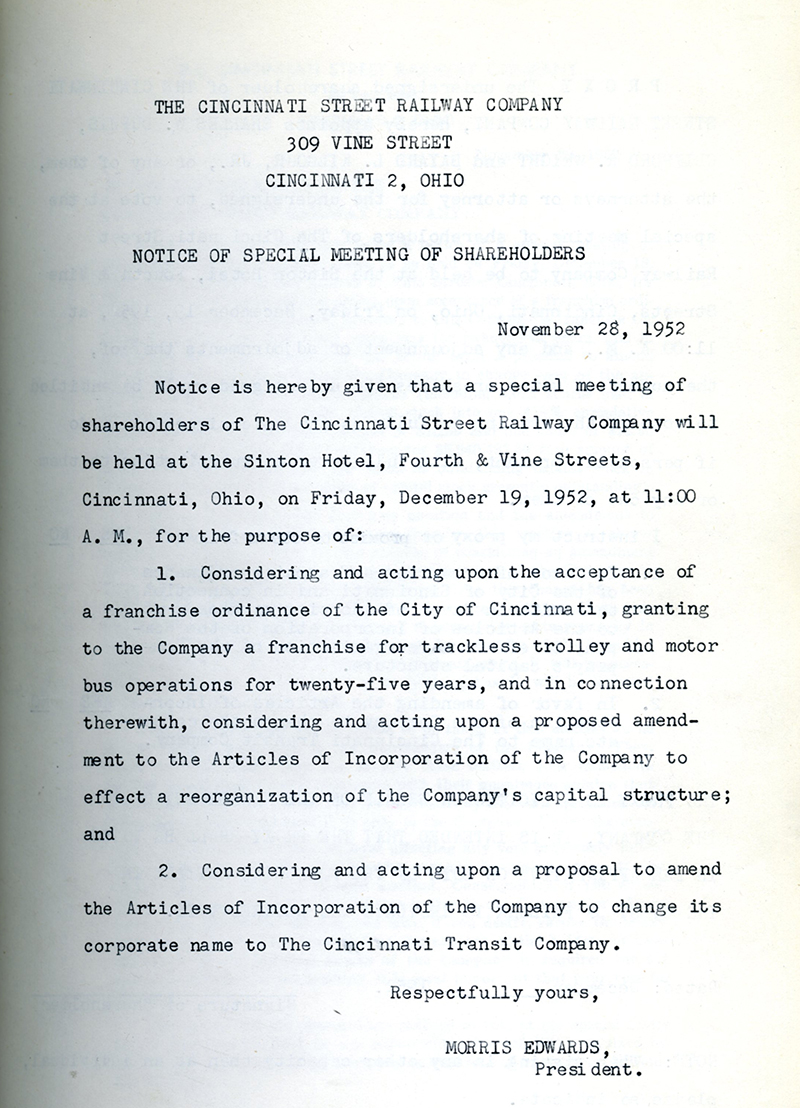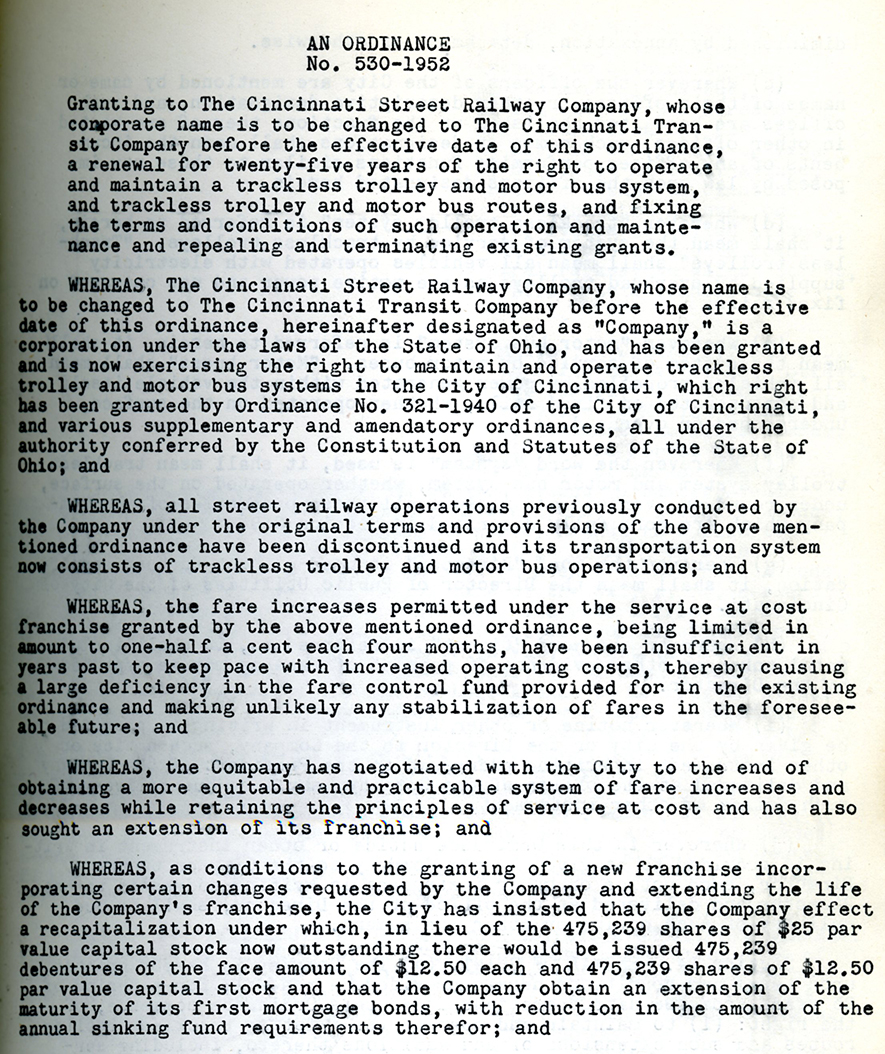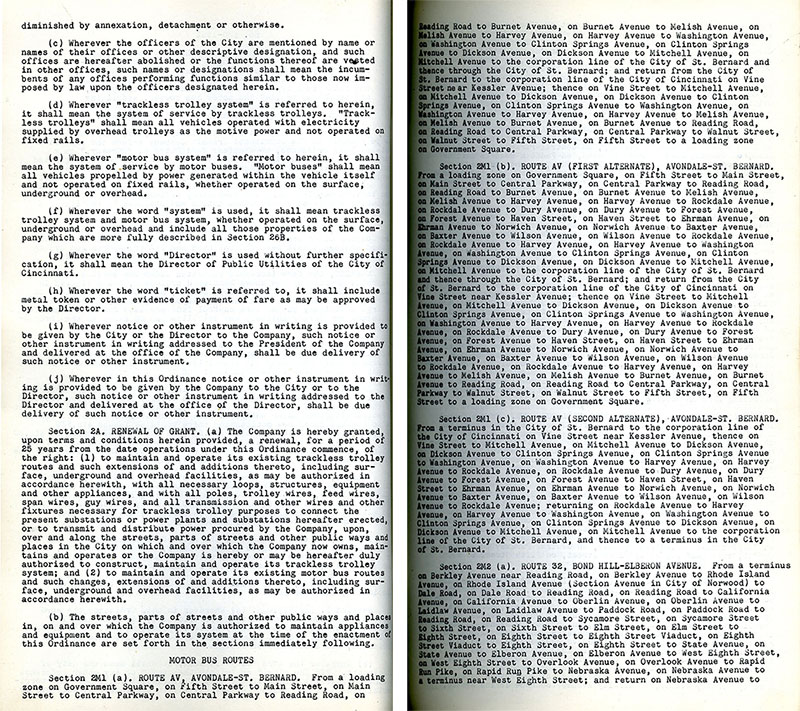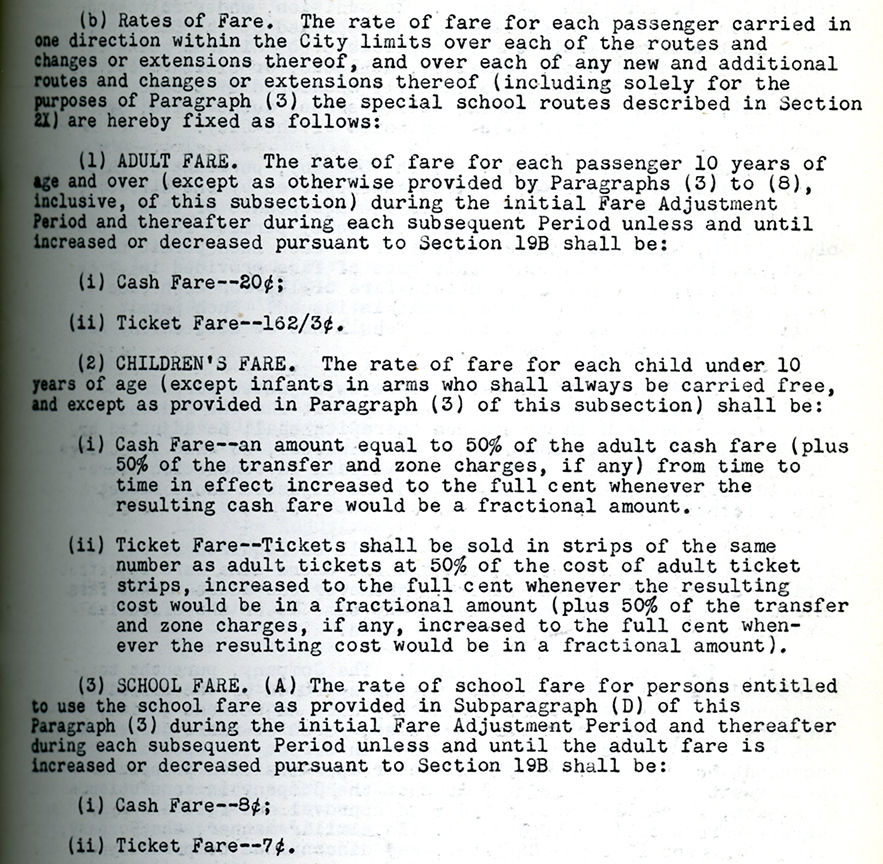By: Alex Temple, Gettler Project Archivist
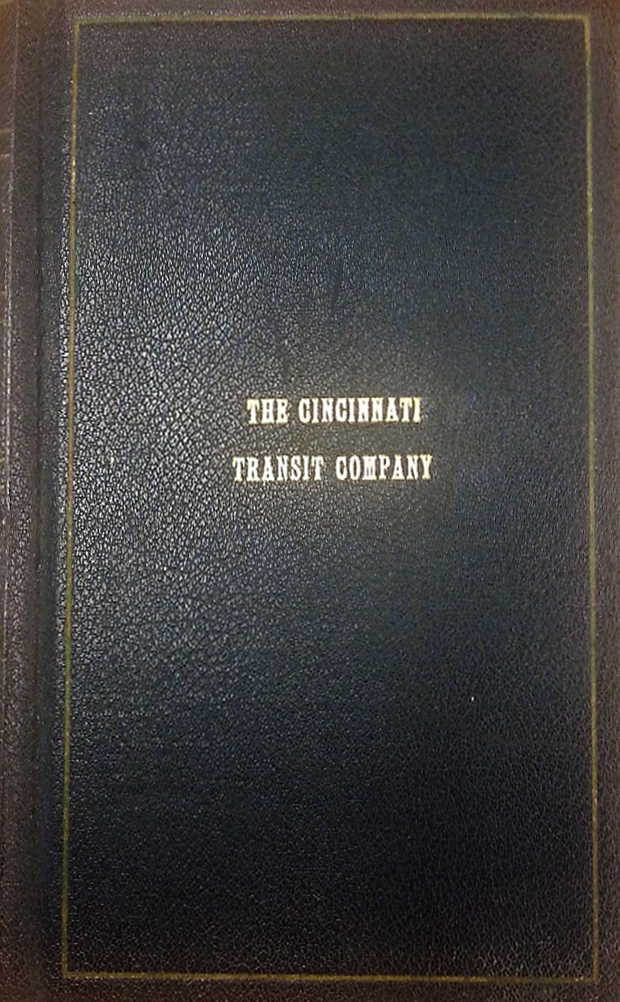 For the past several months, work has continued on processing the Benjamin Gettler Papers donated to the Archives & Rare Books Library. Gettler was a notable lawyer, businessman, and civic activist in Cincinnati, an international philanthropist, and a former member of the University of Cincinnati Board of Trustees. I’ve been fascinated by the amount of public transit-related history in this collection. An often over-looked part of urban history is transportation infrastructure. Public transportation records can tell us not only where people lived, worked, and played, but also the routes taken and who the routes served. They can also provide insight into how, where, or why neighborhoods changed over time.
For the past several months, work has continued on processing the Benjamin Gettler Papers donated to the Archives & Rare Books Library. Gettler was a notable lawyer, businessman, and civic activist in Cincinnati, an international philanthropist, and a former member of the University of Cincinnati Board of Trustees. I’ve been fascinated by the amount of public transit-related history in this collection. An often over-looked part of urban history is transportation infrastructure. Public transportation records can tell us not only where people lived, worked, and played, but also the routes taken and who the routes served. They can also provide insight into how, where, or why neighborhoods changed over time.
Cincinnati’s public transportation, as we recognize it today, really began in 1873 when several horse-drawn tram systems merged to form the Cincinnati Consolidated Railway Company. Nearly a decade later, it was renamed the Cincinnati Street Railway Company (Gettler, 2012). It remained the Cincinnati Street Railway Company until 1952, after the company had fully transitioned from rail to rubber-tire service, becoming the Cincinnati Transit Company.
Gettler himself was a prominent figure in Cincinnati’s transit history, as his involvement started slightly before the switch from streetcars to buses and through the sale of the Cincinnati Transit Company to the City of Cincinnati, forming the South Ohio Regional Transit Association (S.O.R.T.A.), and finally serving on the S.O.R.T.A. board beginning in 2003. A good deal of the collection in the Benjamin Gettler Papers comes from his involvement in public transportation, including items such as meeting minutes from the board of directors. One in particular which I found exciting to study was the meeting minutes from the board of directors from 1952 to 1954.
Immediately you’ll notice this page (above), which is a notice given to shareholders for a meeting to accept an ordinance for a new type of transit service, as well as a name change from the Cincinnati Street Railway Company to the Cincinnati Transit Company (I suppose the name “Cincinnati Trackless Trolley and Motor Bus Operations Company” was already taken). The shareholders overwhelmingly adopted the new ordinance and name change (385,230 to 1,932, and 386,706 to 1,748, respectively). The significant function of the ordinance states that commuter rail is finished, and rubber tires are the only method of public transportation in Cincinnati.
With the roll-out (pun intended) of a tire-based transportation system, new routes had to be adopted. Routes and alternates are found within the ordinance, and amendments to the routes can be found in later meeting minutes as changes were deemed necessary. The route listing section in the ordinance is a lengthy installment as it covered every route, alternates, and listing of street names as they were used on each route.
Another section that caught my eye is related to bus fares. Rising fare prices are always a topic for debate. In 1952, the base bus fare was 20 cents! It’s interesting to see how pieces of daily life for people in the city were decided by the people who drafted this plan. We can see where people got on the bus, how much they paid for themselves and children, and the streets and neighborhoods they might have passed through.
And lest we forget…
It’s good to know that the subway was at least in the back of everybody’s minds!
References
Gettler, B. (2012). Visible Footprints: The Life of Benjamin Gettler. Cincinnati, OH: Cincinnati Book Publishers.

